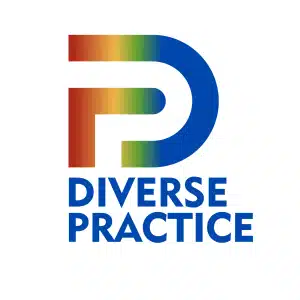A new review from McKinsey Quarterly has determined that transgender adults are twice as likely to be unemployed compared to cisgender adults. This report has been studying the conditions that trans people experience at work.
McKinsey Quarterly, a business magazine, published this study “Being Transgender at Work” and included research like The experiences of LGBTQ+ workers, and UCLA’s Williams Institute. It also incorporated data collected from the Centers for Disease Control and Prevention’s Behavior Risk Factor Surveillance System (BRFSS). This research and information were intended to reveal the state of affairs for transgender workers in 2021.
Did the Study Find Any Other Information on Transgender Adults?
The study also discovered that 1.7 times as many transgender adults said they were recently out of work in comparison to cis people. In addition, 42% more trans people have been working part-time compared to cis respondents. In other words, trans people were less likely to be eligible for benefits that full-time workers are entitled to, like healthcare.
Related: Transgender Issues in healthcare
According to the article: “Both the scarcity and the precarity of transgender employment can lead to feelings of loneliness, instability, and alienation from the rest of the workforce.”
What Were the Results From Mckinsey’s Survey Data?
McKinsey’s survey data determined that trans people are 2.4 times more likely to work in the food or retail industries, which usually offer a minimum wage or even less for tipped positions. As a result, the average yearly household income of transgender adults is about $17,000 less than a cis adult. Those differences only get worse when other factors of marginalization come into play. For example, 75% of Native American trans people and 43% of Hispanic trans people have made less than $25,000 each year.
The study also found that these inequities were not “solved,” even with factors like a college education. In addition, trans respondents to the survey were 1.7 times less likely to have a college degree than their cis counterparts, and those who did have college degrees were more likely (26%) to earn $50,000 or less in comparison to college graduates who were cis (19%).
Why Are Transgender Adults More Unemployed or Earning Less Than Cisgender People?
According to the article, the job-hunting process itself is already going against trans people from the beginning. For instance, trans applicants have to expend more “mental and psychological energy toward masking themselves in a way that cisgender job applicants don’t need to do.” In addition, 50% of transgender adults who were surveyed said that they felt they could not be their authentic selves during the application process. However, only 33% of cis respondents felt the same way.
In addition, trans workers are more likely to feel like some industries aren’t available to them due to their gender identity. Trans workers have reported not feeling safe in specific industries or work environments, that they can’t bring their “full self to work,” and that there is a shortage of other trans and gender-nonconforming workers, creating unsafe employment conditions.
Do Trans People Feel Safe at Work Once They Do Get Hired?
Even when transgender people are hired, they don’t necessarily feel less alienated. For example, transgender people are twice as likely as their cis counterparts to feel like they’re the only person “like them” in the workplace. Only 32% of trans people felt comfortable being fully out in their place of employment. In addition, some workers thought they had no choice, with “more than one-fifth” of trans people surveyed reporting that they were outed or could not physically hide their identity.
Related: How to Make Your Workplace More LGBTQ+ Friendly
What Other Kinds of Issues Do Transgender Adults Experience in the Workplace?
When transgender people are in a new workplace setting, they can often face many difficulties, for instance, abuse, well-intentioned but unaware employers, and toxic cultures that can punish trans employees for indirectly showing their identity.
Even though some trans-friendly workplaces do exist, sadly, transgender employees continue to experience harassment and discrimination from their coworkers. For instance, a 2011 survey found that 90 percent of respondents said they “directly experienced harassment or mistreatment at work.”
According to recent data from trans people who were surveyed about their experiences at work:
- 50 percent of trans people reported being harassed by their coworkers
- 41 percent said coworkers asked them inappropriate questions about their gender or surgical status
- 23 percent said they were excluded from promotions
- 20 percent were prevented from contacting clients
- 7 percent experienced physical violence
- 6 percent were sexually assaulted
Unfortunately, these high rates of mistreatment are even worse for transgender people of color.
Is There Any Hope for Future Progress?
In more optimistic news, acceptance and awareness of transgender issues are rising among the general public and the business world. For example, between 2002 and 2017, the percentage of Fortune 500 companies that have added workplace protections on the basis of gender has gone up from 3 percent to 83 percent.
How Can We Improve Working Conditions for Transgender People?
According to the article from McKinsey Quarterly, there are various ways to solve these inequities. First, businesses can improve the way that they recruit candidates. For example, they could offer skills-based training for trans community organizations, participate in career fairs that benefit the trans community, and enhance communication to be more inclusive to trans people. Furthermore, the article also suggests more trans-affirming benefits, like mental health support and coverage for gender-affirming medical procedures.
The article also had other ideas like creating trans-inclusive policies, reviewing company dress codes, and providing diversity training. Finally, it recommends cultivating an inclusive culture that doesn’t force trans people into “outing” themselves. Companies can do so by allowing applicants to use various pronouns besides just “he” and “she,” incorporating gender-neutral bathrooms, and celebrating days like Trans Day of Visibility and Trans Awareness Week.
The article stated: “While there is much to be proud of in the workplace advances of the LGBTQ+ community over the past decade, true progress cannot be realized unless it includes every letter of the abbreviation. When employers better understand the challenges that transgender people face, they can knock those barriers down.”
In Summary
There is no doubt that transgender people experience many obstacles and barriers in the workplace. Transgender workers can encounter issues regarding legal protections, workplace cultures, harassment, discrimination, and abuse.
It is essential for companies to create transgender-friendly and safe workplaces that understand the unique challenges of trans people and adjust their practices and policies accordingly.














